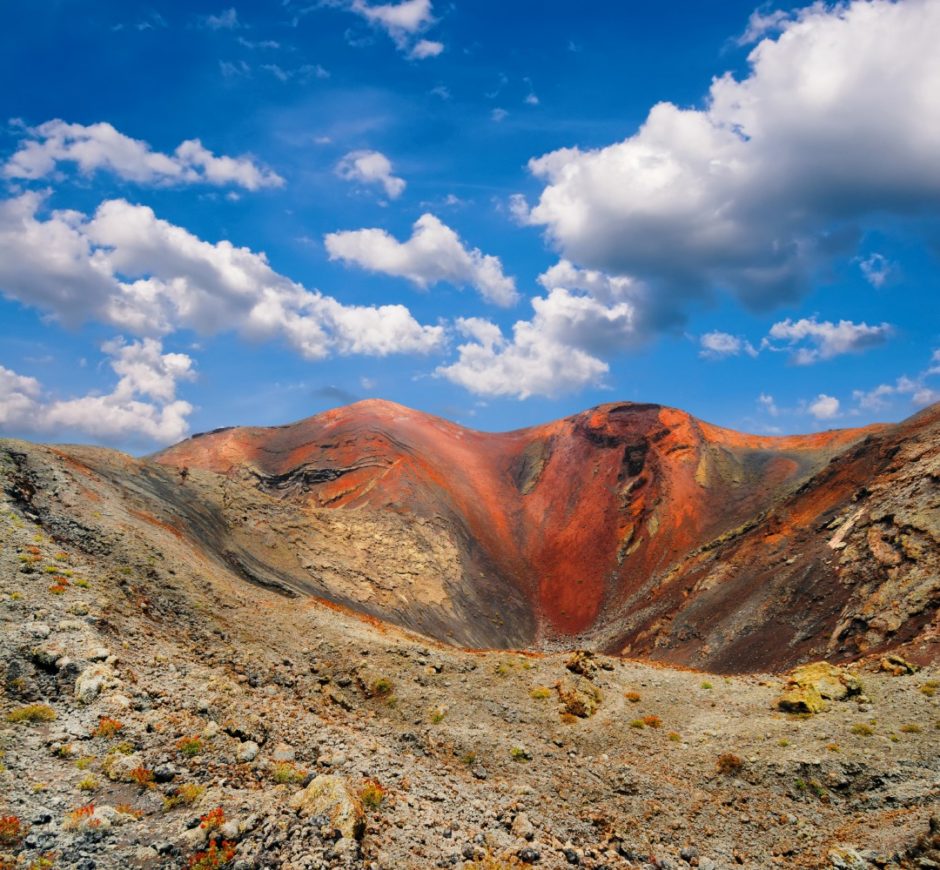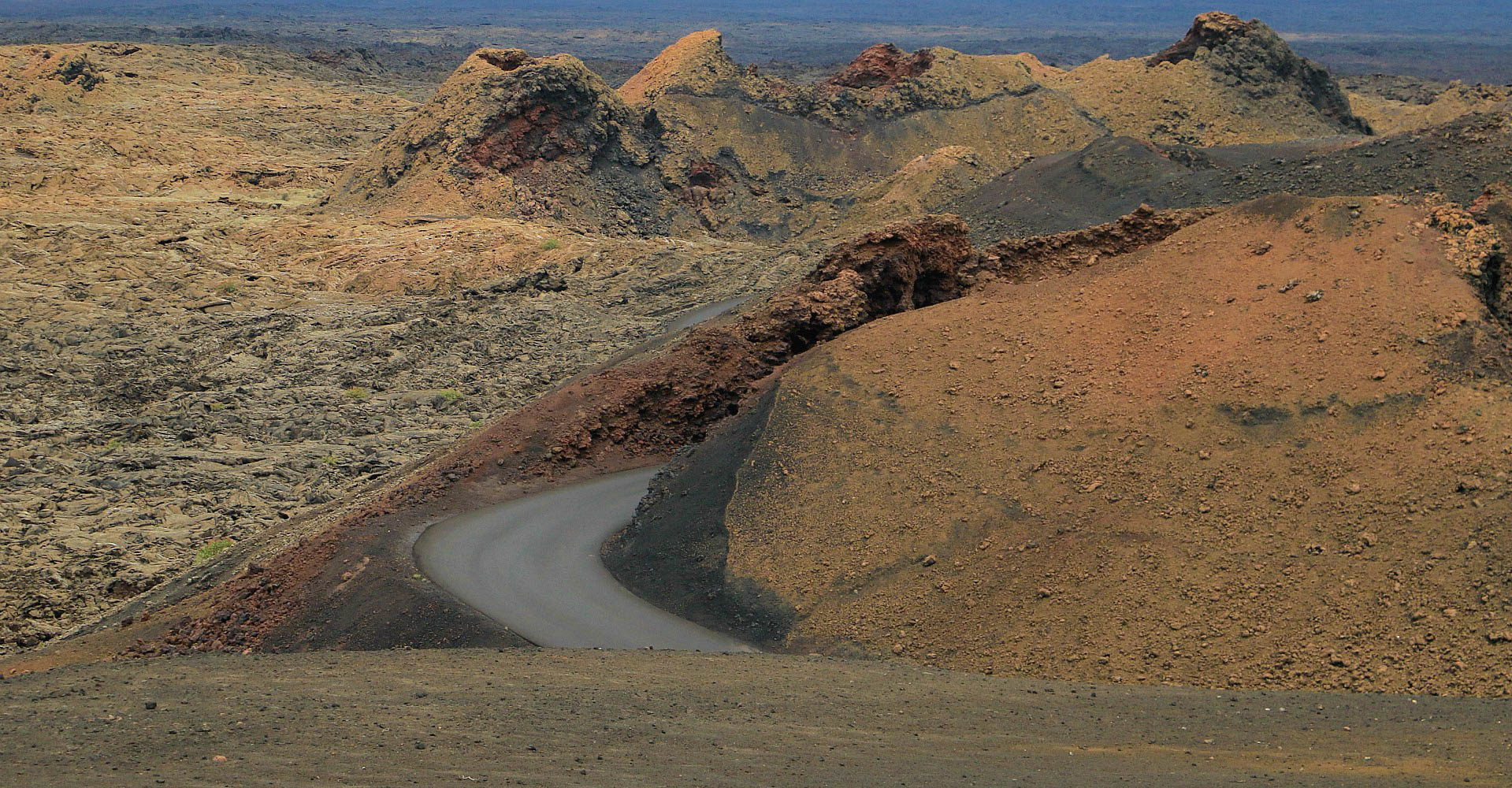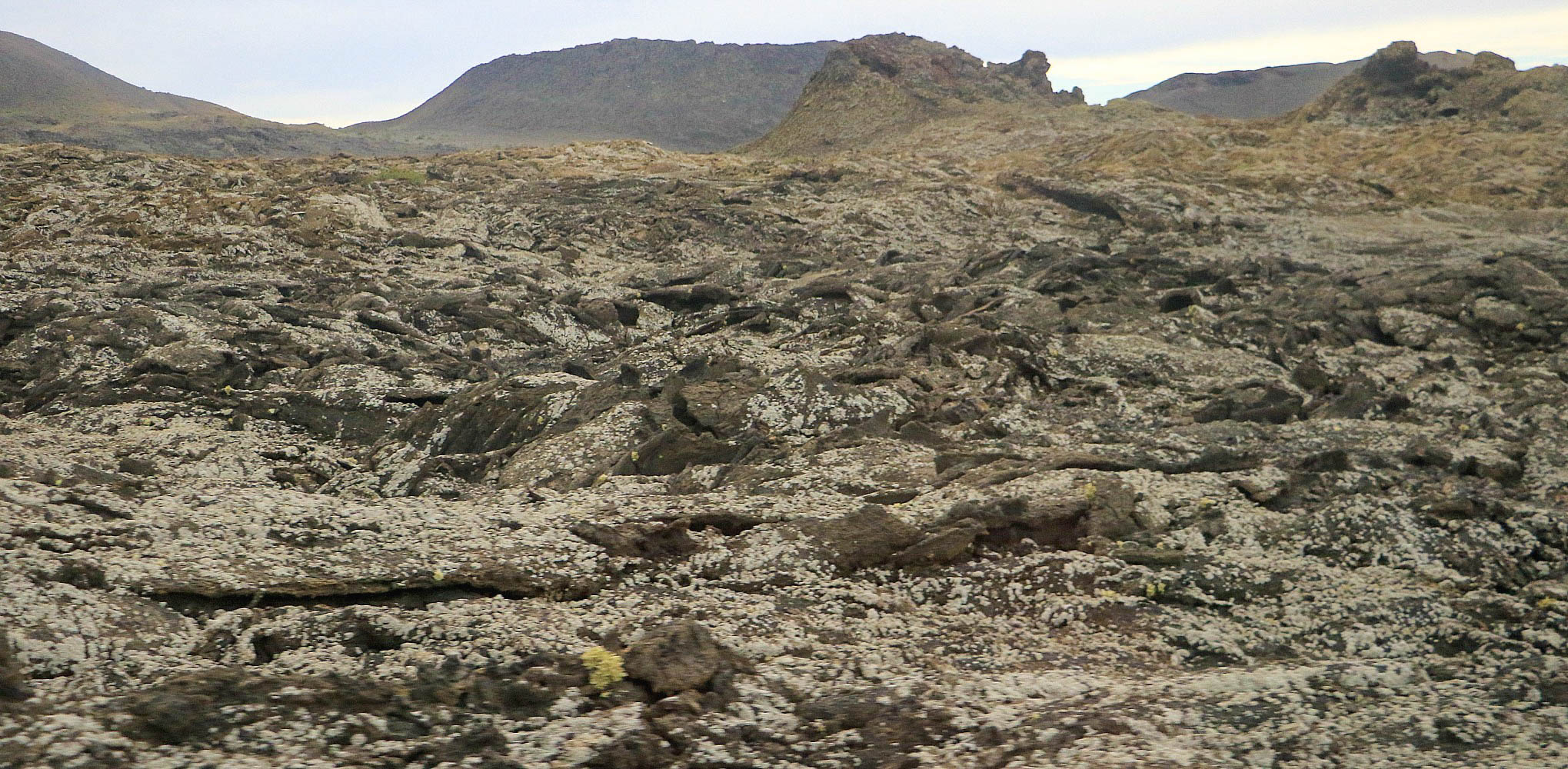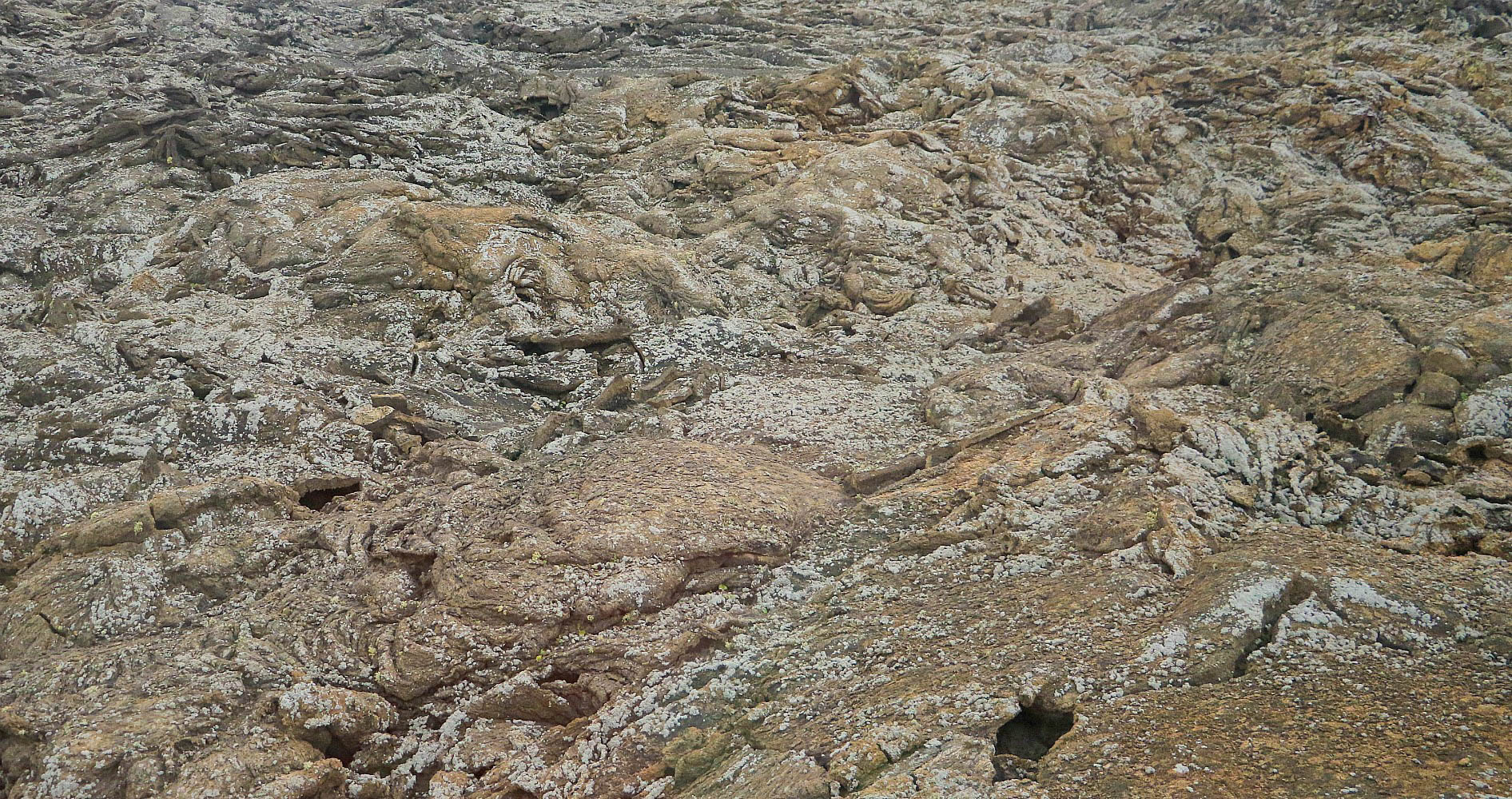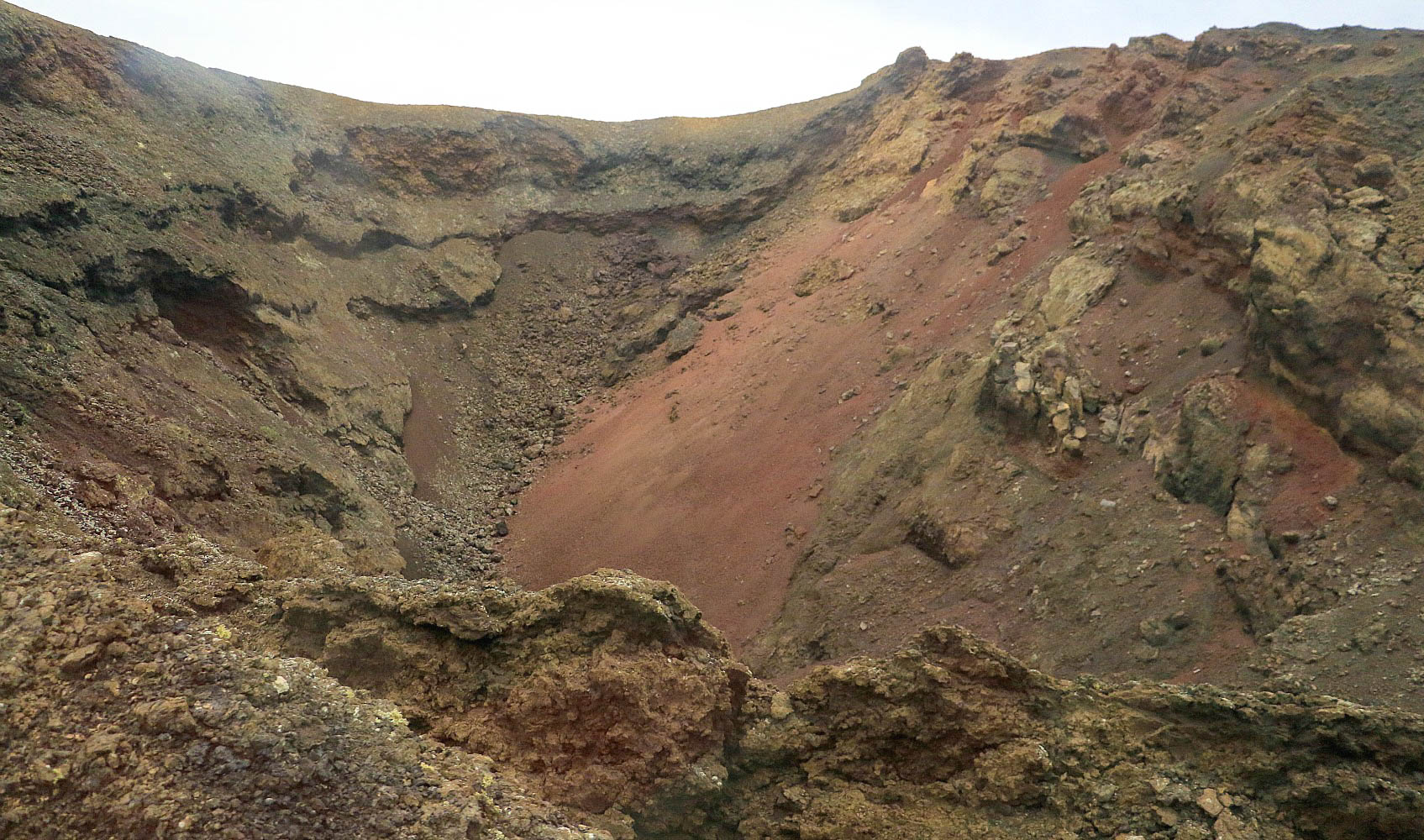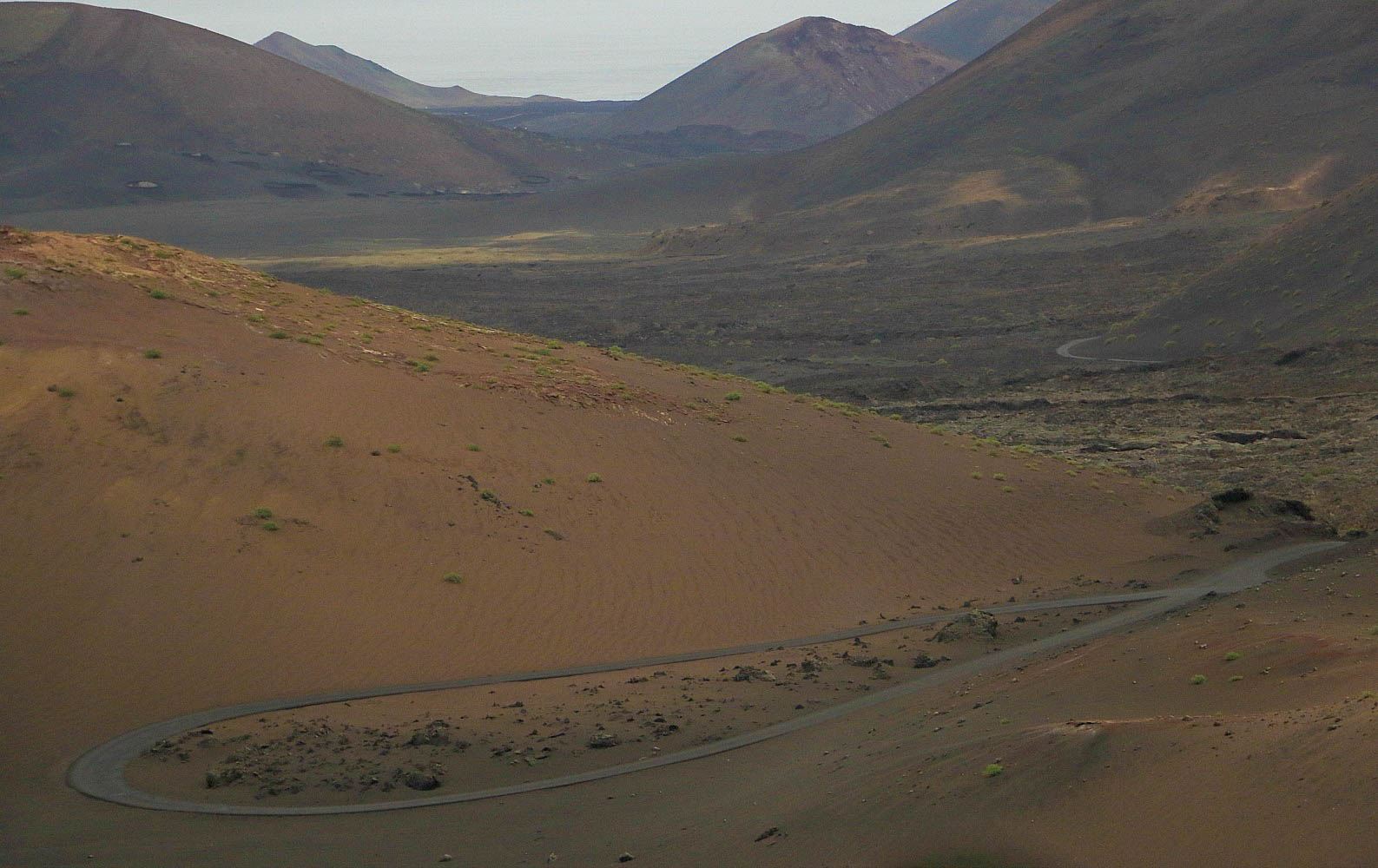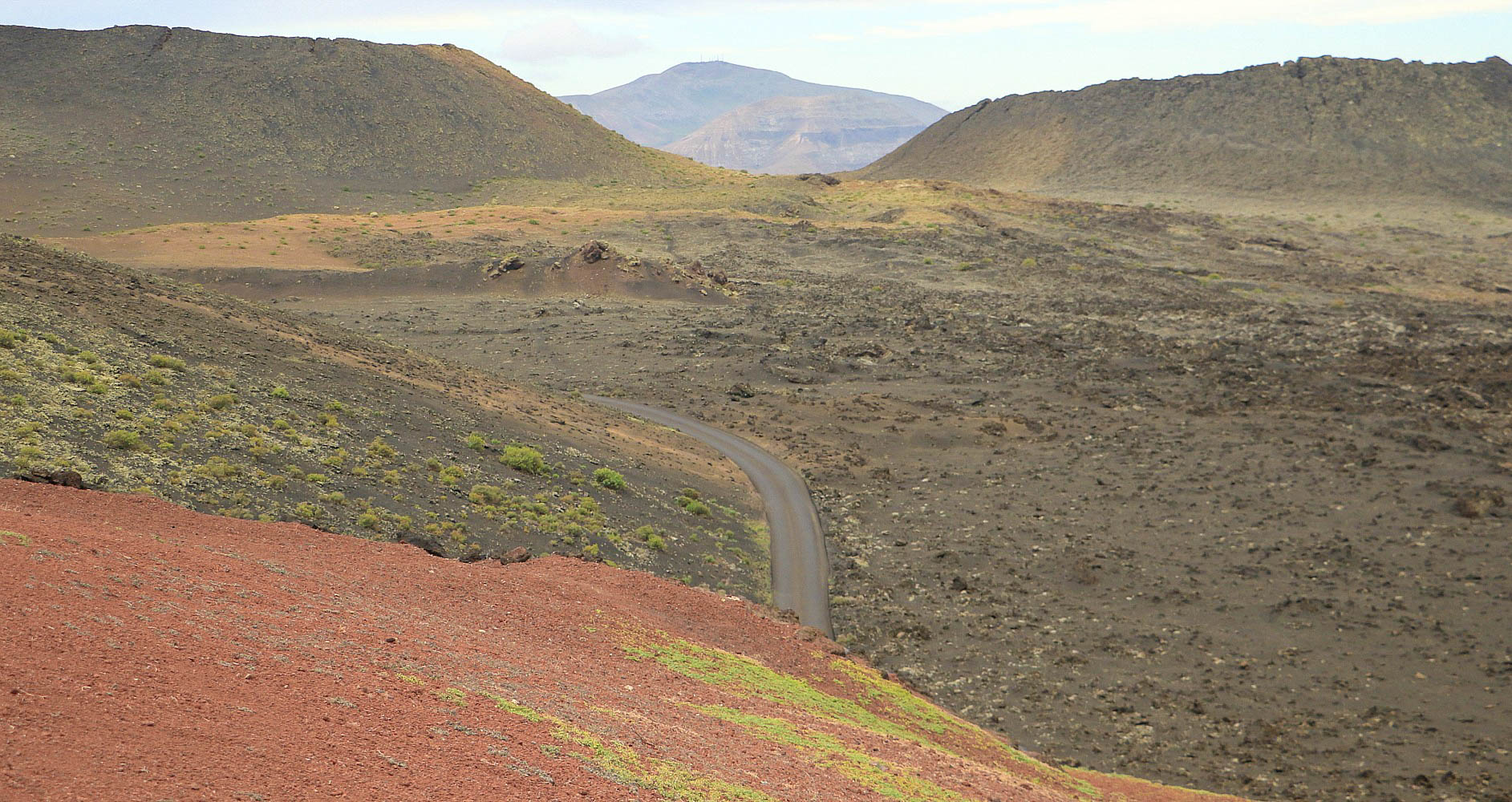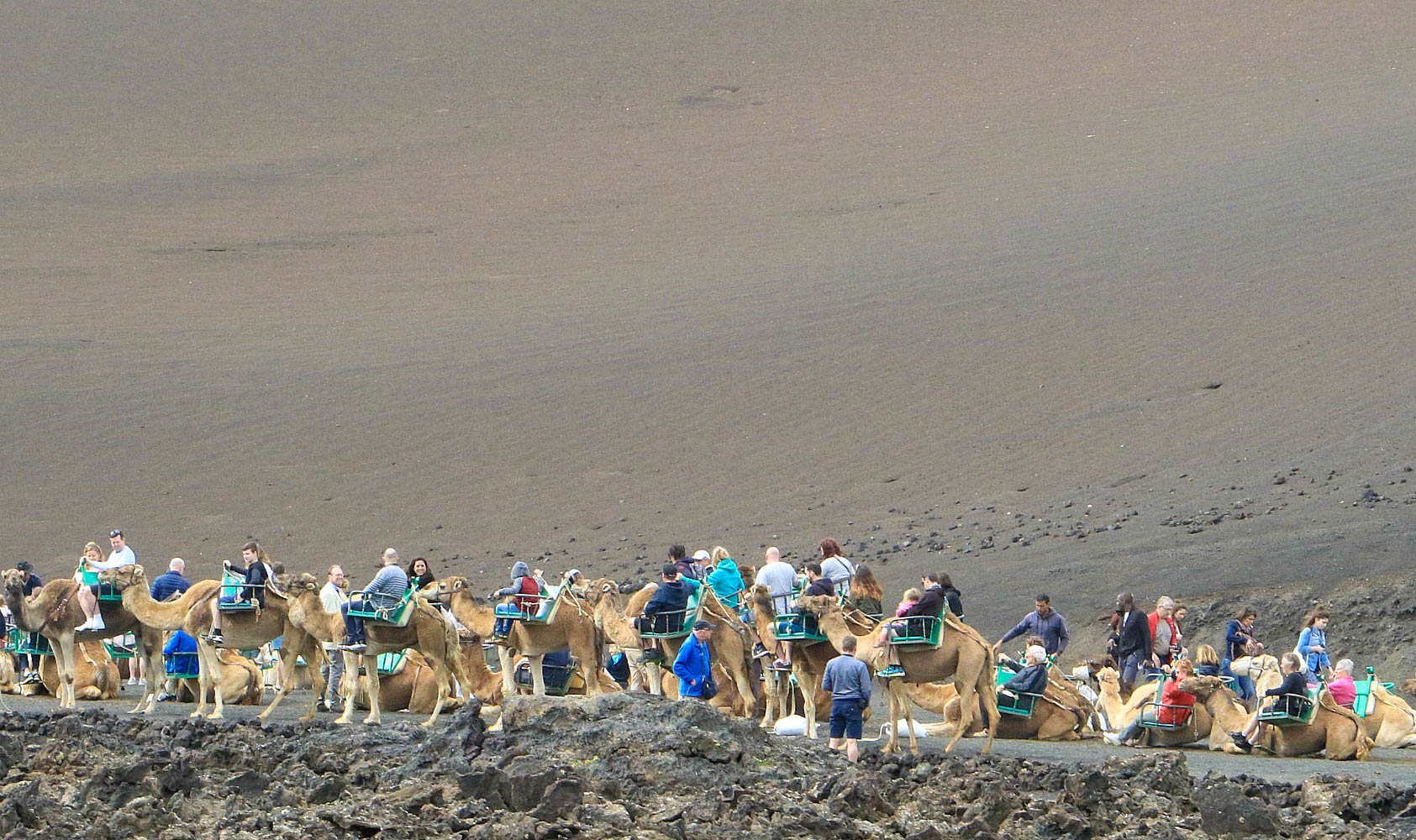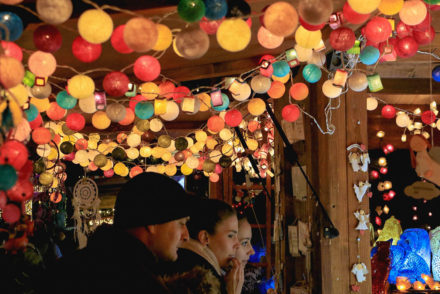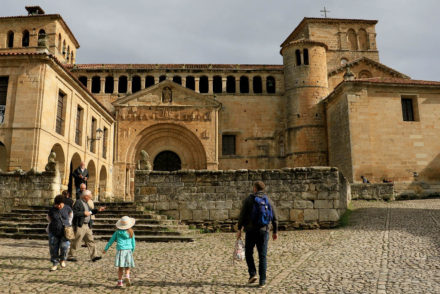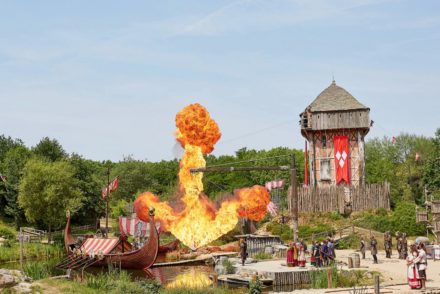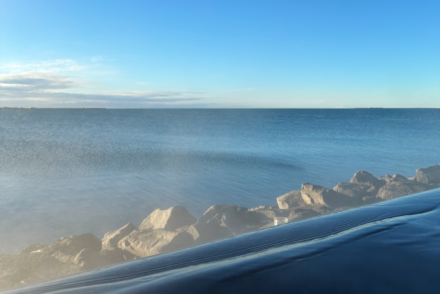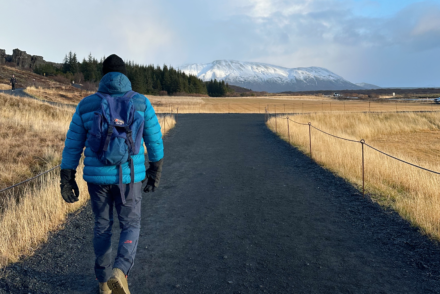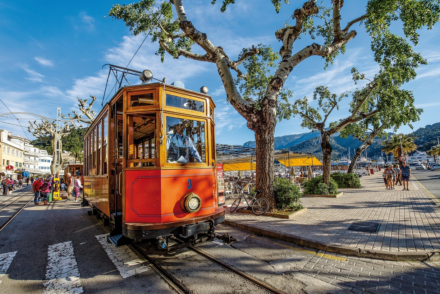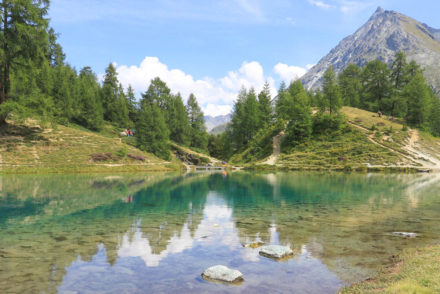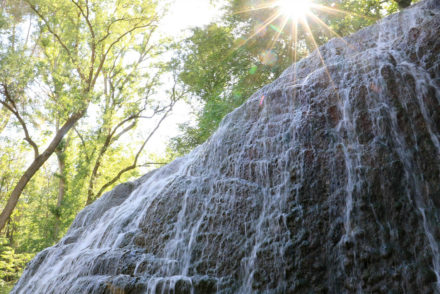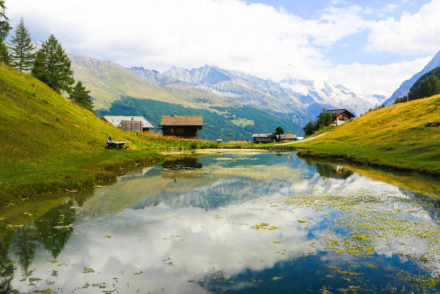The Montanas del Fuego in the Timanfaya National Park were created between 1730 and 1736 when more than a hundred volcanoes devastated this part of Lanzarote. Although no-one died, many of those that had farmed the area left the island. There was so much ash and smoke in the atmosphere, even the sun disappeared for a time. There have been no eruptions here for 300 years now and much of the landscape has remained the same due to the low rainfall. The ‘martian-like’ scenery makes the Fire Mountains a must see when you’re on the island.
We’d arrived at Montanas del Fuego first thing in the morning as it does get busy. We only queued for a short time and we in the park soon enough taking in this quite exceptional landscape. With temperatures just below the surface reaching 400 to 600 degrees centigrade, there are demonstrations that show how hot the area is. Like dry bush catching fire immediately when placed in a hole with water poured into a bore hole erupting seconds later like a mini geyser. Even the El Diablo restaurant here uses geothermal heat to cook its food. They have an opening in the ground to grill the meat and fish they serve.
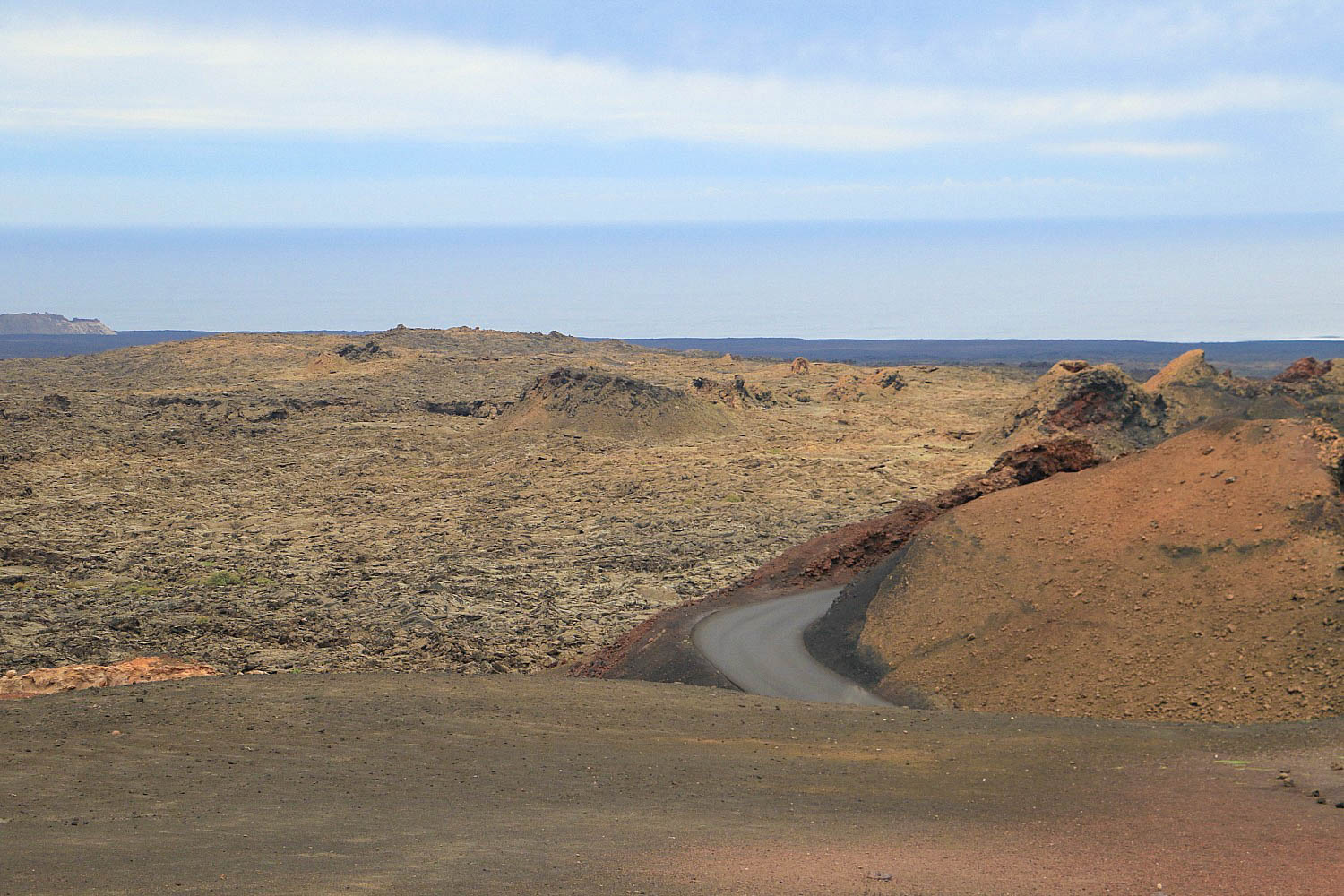
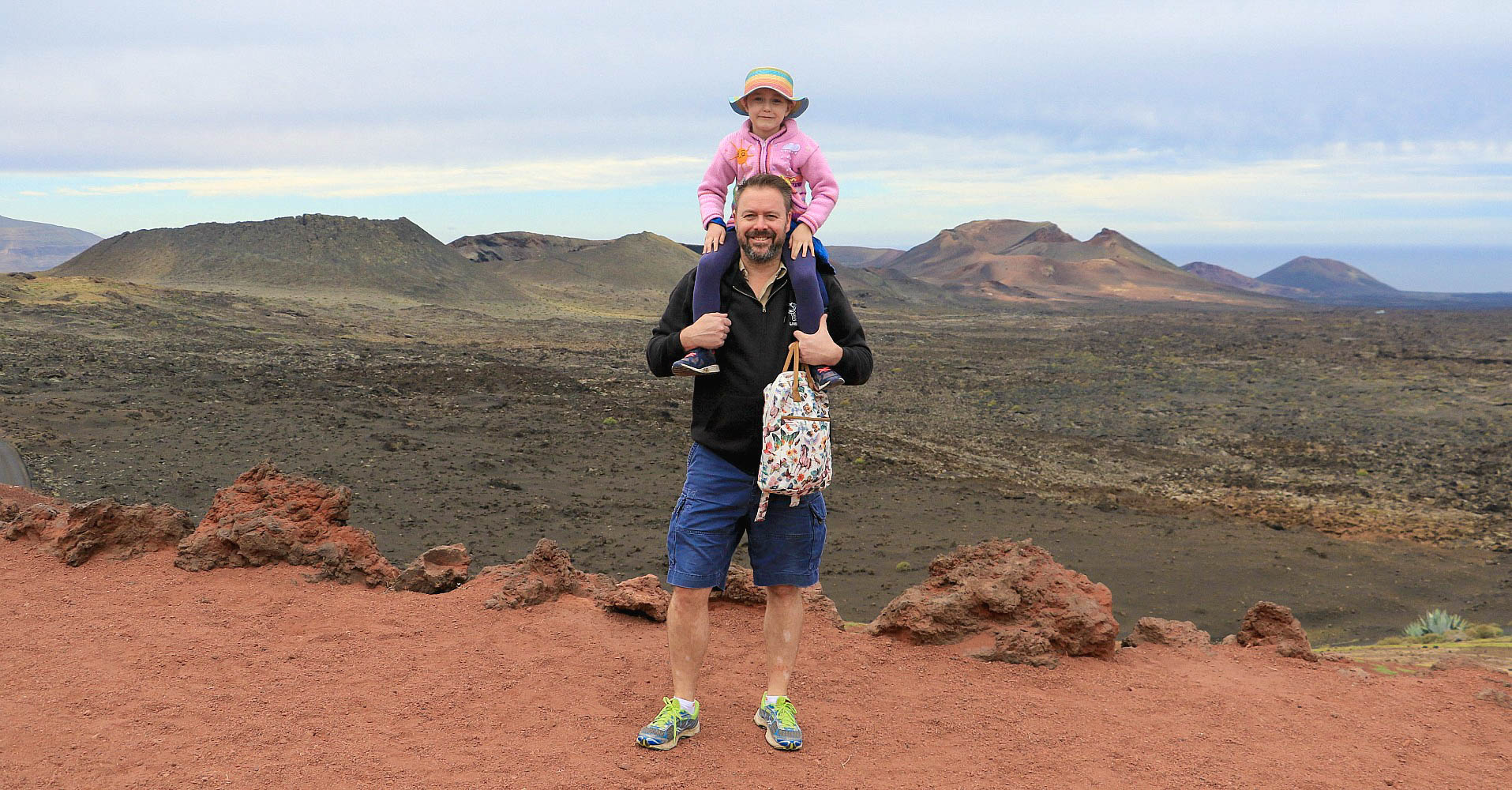
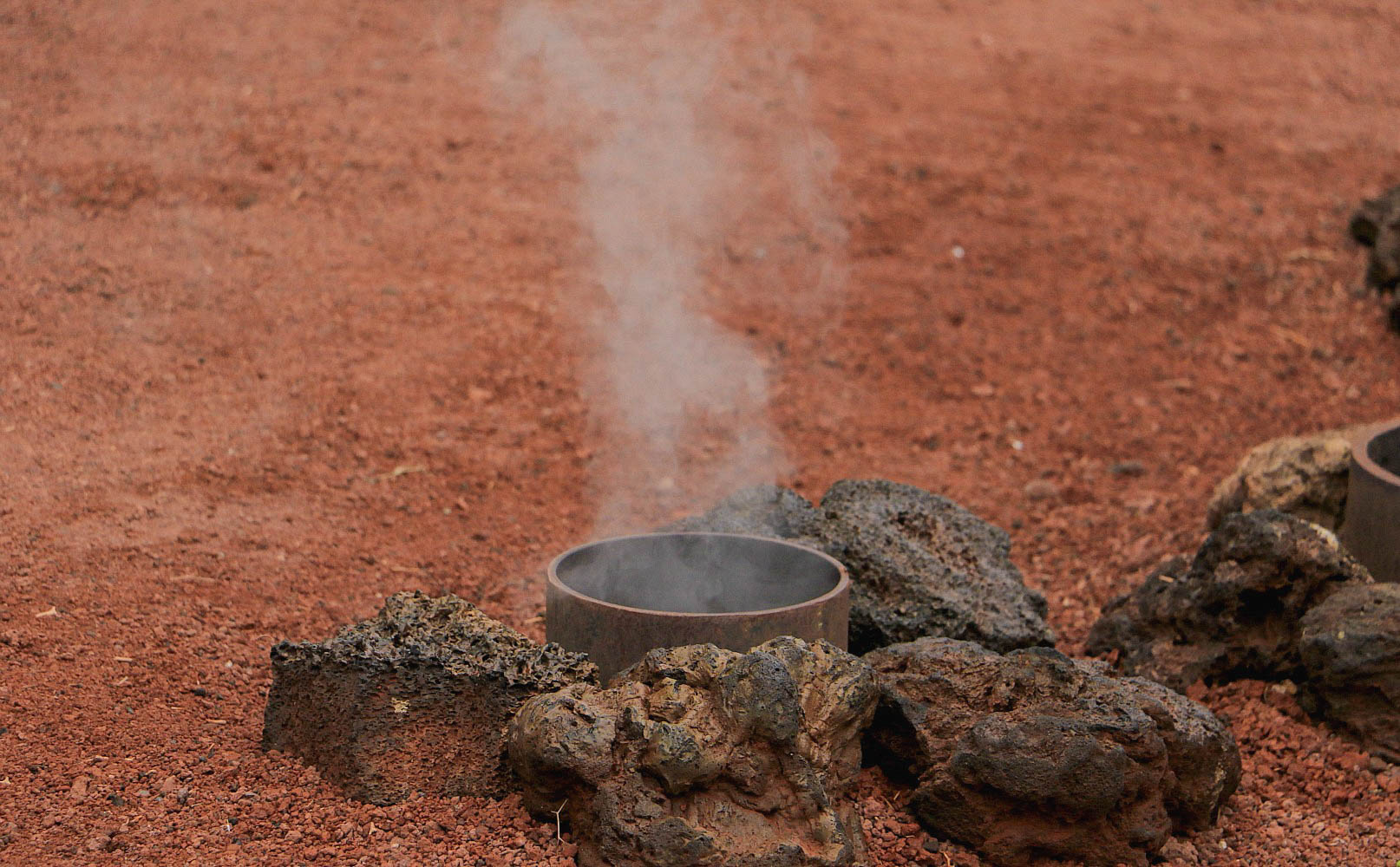
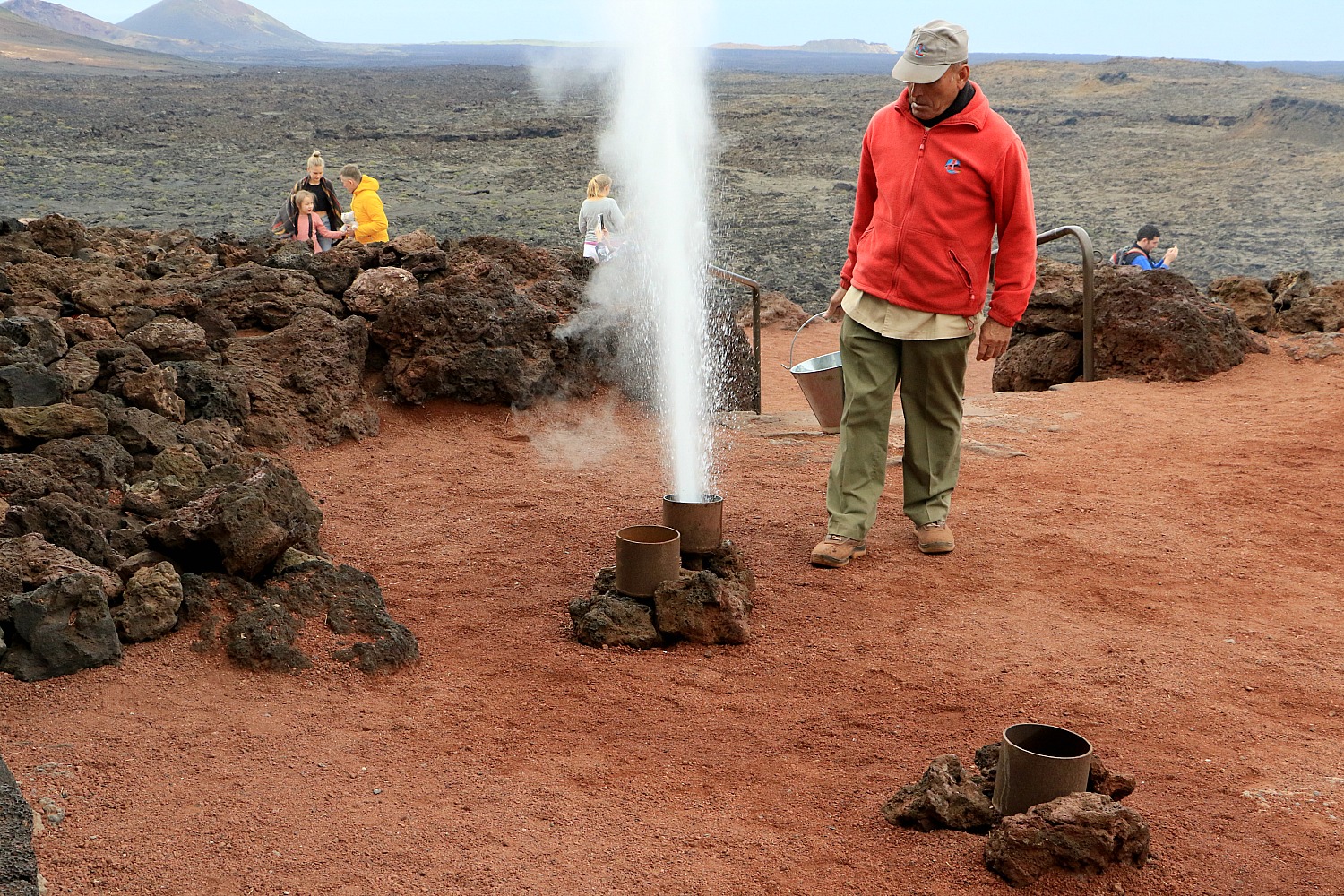
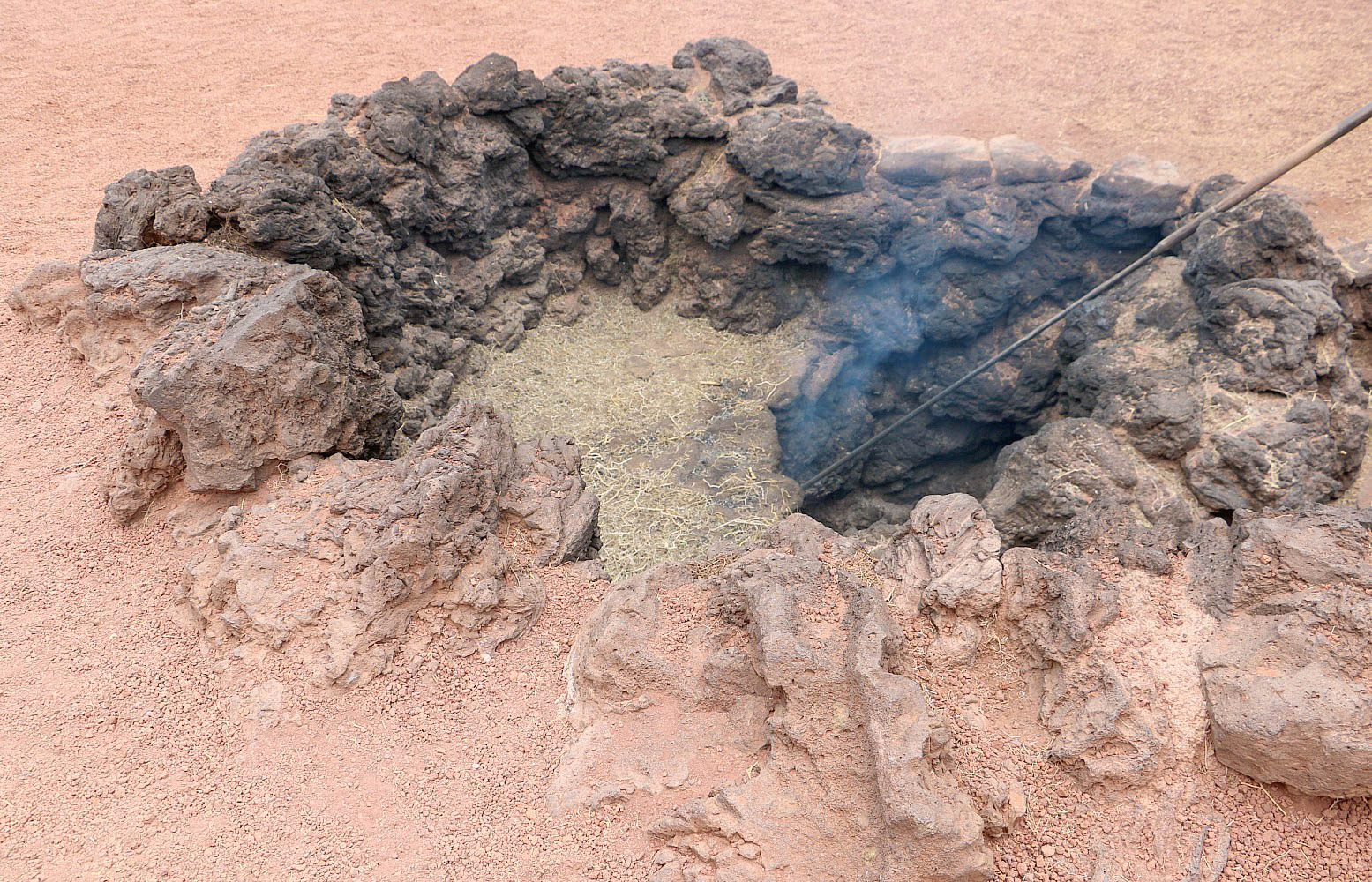
 The best way to really appreciate the fire mountains it to take one of the available coach trips around the national park. Visitors to the Fire Mountains are not permitted to walk through the park so it remains intact. The tour is included in the price of each Timanfaya National Park entry ticket and leave on a regular basis. Each tour lasts around 20 minutes and it’s well worth it.
The best way to really appreciate the fire mountains it to take one of the available coach trips around the national park. Visitors to the Fire Mountains are not permitted to walk through the park so it remains intact. The tour is included in the price of each Timanfaya National Park entry ticket and leave on a regular basis. Each tour lasts around 20 minutes and it’s well worth it.
You get to see the lava fields, craters, seas of sand and lapilli (black volcanic pebbles) which largely haven’t changed since the 1700’s. The coach trip even takes you along hairpin bends towards the Santa Catalina volcano, the sight of all the surrounding lava is unbelievable. It’s hard to believe how terrifying it must have been to see it in its molten form. If you don’t fancy the coach tour, you could always explore the Fire Mountains by camel! These leave from the visitors centre on a trek up the side of a volcano.
Featured image iStock. All other photographs Charly Dove.

